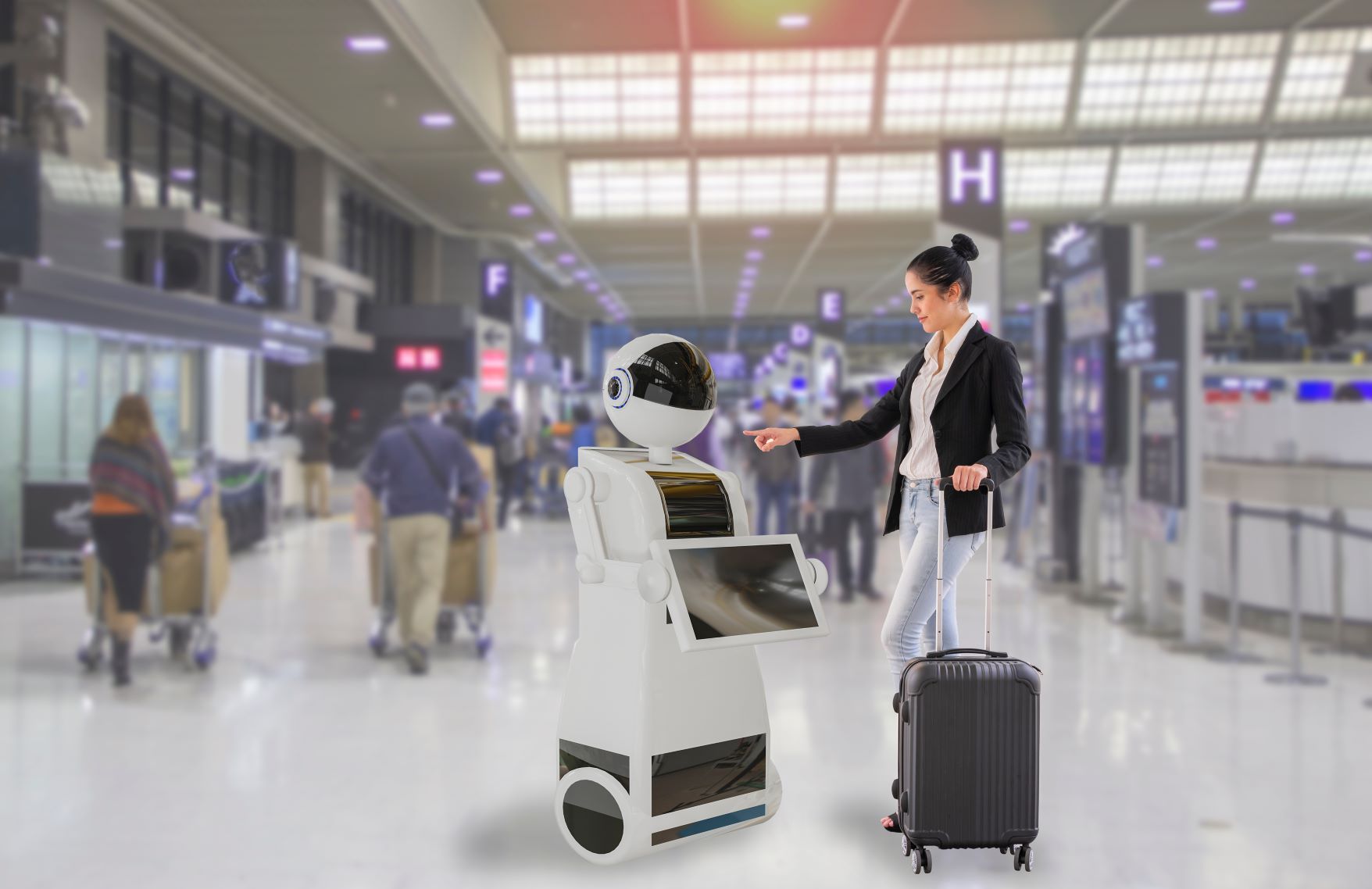Innovation in airport design stimulated by a pandemic: the contactless passenger journey
Posted 28/01/2021 by Eleana Toliou

A new ranking of airports has emerged following the challenging year of 2020. Airports are now being assessed based on their Covid-related protocols; an initiative launched by the Safe Travel Barometer. Currently ranking top are Singapore Changi, Abu Dhabi, Hamad, Dubai and Heathrow.
With the possibility of this new ranking eventually influencing traveller decisions, it's interesting to look at the reasons behind the top-ranking airports' success. The short answer is their application of technology. The degree to which a passenger can go from home to boarding an aircraft, touching as few surfaces and coming into contact with as few people as possible, is the critical factor in the covid-19 safety protocols on which the ranking is based. This is known as the 'contactless journey'.
Smart technology at different airport touchpoints
Airport reputation is now directly correlated with technology and innovation. The need for creative solutions is higher now than ever, and some airports are leading the way. Hong Kong's self-driving robots have not only attracted attention as they clean the public areas and restrooms; they have also increased the sense of safety of those passing through. Entering Singapore's Changi Airport feels like a Covid-free, safe place due to thermal screeners taking the temperature of all staff and visitors entering transit areas. In multi-airport systems, preference for airports that provide Covid-19 testing has also been observed. Dallas Airport has gone one step further, introducing 'Smart Bathrooms' that include monitors outside to let people know how many stalls are available without having to wait in a confined space.
What about leisure? Major brands and restaurants used to race to rent space in airports, many of which transformed into giant shopping malls in recent years. Now, most shops and restaurants in airports have been shut for months. Once travel bounces back, so must the industry, keeping customers satisfied during transit. The biggest challenge will be reviving the retail and restaurant spaces to accommodate the new post-Covid-19 era, with necessary social distancing and safety protocols.
One solution for retail already implemented in a handful of airports in the USA is delivery. Dubai Duty Free has announced similar plans to re-open some venues using a concierge service, whereby customers can select and have products delivered to their location. Restaurants will most likely have to adopt similar models to those in cities, implementing food delivery services within airports.
Innovation within flight information communication has also started to grow, with Delta Airlines trialling a Parallel Reality experience - displaying individual flight updates to different passengers on a single screen. Robots and chatbots are also expected to use facial
recognition to provide tailored information to each passenger, and for entertainment, space will be given to virtual reality-based gaming rooms, audio-visual and hologram initiatives.
The words 'touchless' and 'contactless' are now prefixed to most airport services and facilities, including baggage drop, check-in kiosks and food & beverage offerings. Touchscreen airport maps are shifting to voice activation to assist travellers without having to touch the screen. Indoor maps are also starting to pop up on mobile phones, guiding guests through the terminals to their preferred destination. While small changes have been developing quickly, such as touchless sinks and soap dispensers in the restrooms, the pandemic has urged faster adoption of more cutting-edge and creative technology.
The next step: biometric facial recognition across the entire journey
Automation has become a necessity rather than a bonus, a pre-requisite that may be the key to defeating the new-born fear of flying due to health and safety issues. Small steps may not be sufficient in addressing these new expectations. In a fight to re-attract travellers, airports are slowly entering a race of fast-paced technological adoption, with cutting-edge tools such as Artificial Intelligence, Facial Recognition, Automation and Biometric Scanners designed to take us and our luggage through a touchless journey.
Biometric facial recognition throughout the entire airport journey from entering the terminal to boarding the plane is becoming a new reality. Aerospace Groups such as Thales and Collins have been developing a more wholistic touchless approach to automate all possible touchpoints, including recreational areas such as lounges and shopping. This biometric technology is has been trialled at Lyon Airport, where, since October 2020, Mona, the Biometric Assistant, is accompanying passengers from their homes up until their boarding.

Financing innovation in airports
A significant number of questions about how these innovations will work in the long-term remain unanswered, with most airports currently serving only a handful of passengers. There remain unsolved challenges for the wounded air travel industry to overcome before making flying normal again. Creativity, technology and innovation appear to be the primary weapons for airports to tackle our new reluctance to fly. However, the question remains as to how airports and investors will finance such expensive investments?
The use of expensive
technology and Artificial Intelligence may sound intimidating for airports,
especially given the recent financial struggles that most have suffered. There
are also simple solutions that can help modernise and use their large spaces
more efficiently, at a lower cost. The current typical layout with high-density
areas at hold rooms, lounges and concession seating cannot survive in the new
normal. Passengers will need to be incentivised to spread out more across the
terminals. Adding lounge seating and pop-up retail could be some of the answers
to more efficient use of space.
From this need to change, the impact of the pandemic on the industry is likely to be positive. This crisis has urged airports to accelerate their adoption of better design and technology to tackle hygienic concerns, with the added long-term benefits of increasing the quality and efficiency, and therefore overall experience, of a traveller's journey.